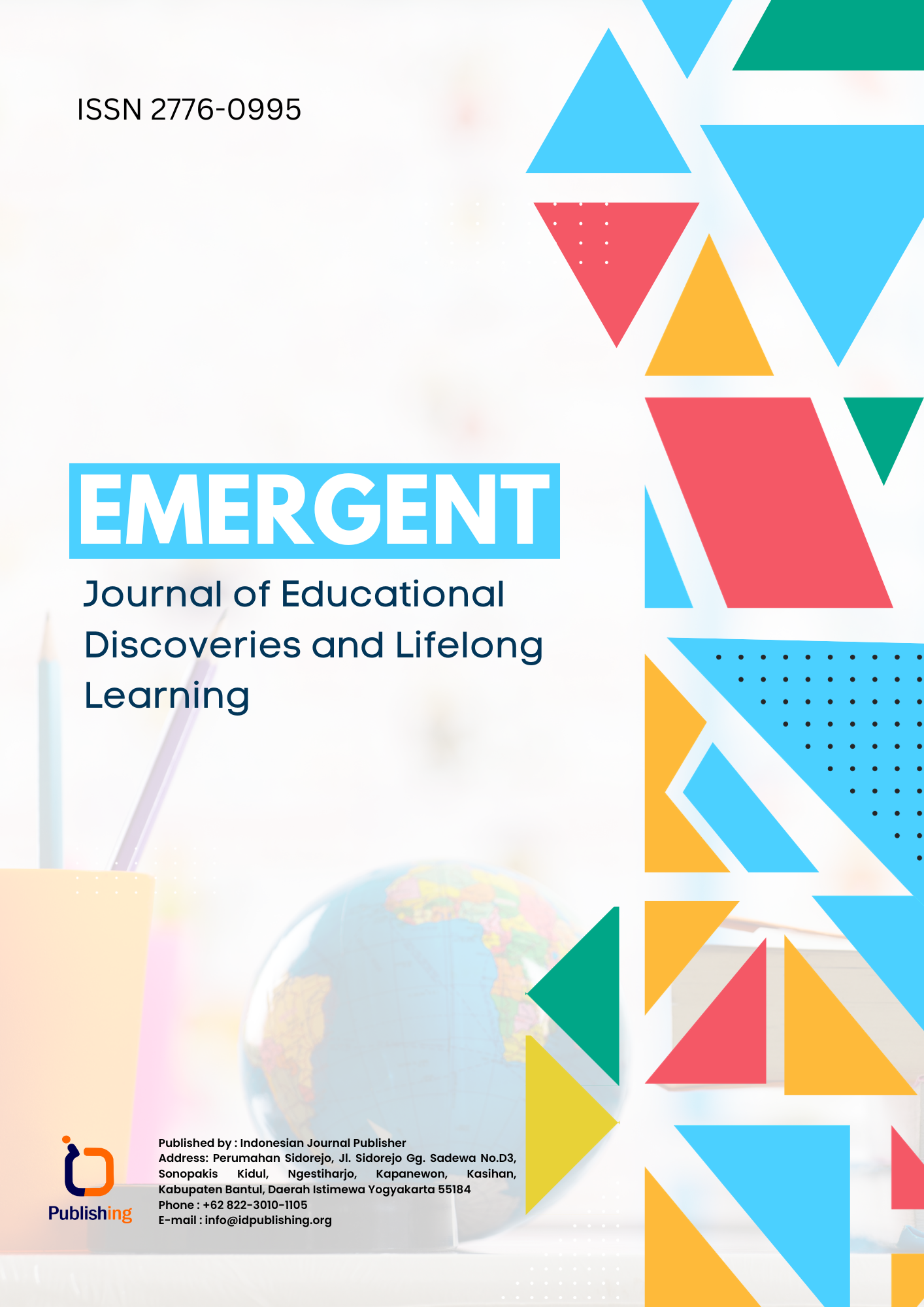From Bloom's Taxonomy Into Webb's Depth of Knowledge: Enhancing Lesson Planning Strategies
DOI:
https://doi.org/10.47134/emergent.v3i4.50Keywords:
Bloom’s Taxonomy, Webb’s DOK, Lesson Planning, Learning Objectives, Student Engagement, Cognitive Rigor, Critical ThinkingAbstract
This article examines the shift from Bloom’s Taxonomy, a well-established model of cognitive skills, to Webb’s Depth of Knowledge (DOK), which focuses on the complexity of cognitive tasks. It provides an overview of both frameworks and discusses their roles in lesson planning and instructional design. While Bloom’s Taxonomy serves as a foundational tool for structuring learning objectives across levels of understanding, application, and creation, Webb’s DOK offers a more nuanced approach by emphasizing the depth of student engagement and cognitive rigor. Combined, these frameworks form a robust strategy for designing lessons that promote critical thinking and adaptability. By integrating Bloom’s Taxonomy with Webb’s DOK, educators can better align instructional goals with student outcomes, creating a progressive and comprehensive learning experience. This article also presents strategies for incorporating both frameworks into lesson planning, offering practical insights and examples for educators seeking to enhance student autonomy and engagement.
References
Anderson, L. W., & Krathwohl, D. R. (2001). A Taxonomy for Learning, Teaching, and Assessing: A Revision of Bloom's Taxonomy of Educational Objectives. Longman.
Bloom, B. S. (1956). Taxonomy of Educational Objectives: The Classification of Educational Goals. McKay.
Churches, A. (2009). Bloom’s Digital Taxonomy. Educational Origami.
DeMara, R. F. (2019). Engineering assessment strata: A layered approach to evaluation spanning Bloom’s taxonomy of learning. Education and Information Technologies, 24(2), 1147–1171. https://doi.org/10.1007/s10639-018-9812-5 DOI: https://doi.org/10.1007/s10639-018-9812-5
Dweck, C. S. (2006). Mindset: The New Psychology of Success. Random House.
Gagné, R. M. (1985). The Conditions of Learning and Theory of Instruction. Holt, Rinehart and Winston.
Gani, M. O. (2023). Bloom’s Taxonomy-based exam question classification: The outcome of CNN and optimal pre-trained word embedding technique. Education and Information Technologies, 28(12), 15893–15914. https://doi.org/10.1007/s10639-023-11842-1 DOI: https://doi.org/10.1007/s10639-023-11842-1
Goh, T. T. (2022). A Comparative Study on Part-of-Speech Taggers’ Performance on Examination Questions Classification According to Bloom’s Taxonomy. Journal of Physics: Conference Series, 2224(1). https://doi.org/10.1088/1742-6596/2224/1/012001 DOI: https://doi.org/10.1088/1742-6596/2224/1/012001
Hess, K. K. (2013). A Guide for Using Webb’s Depth of Knowledge with Common Core State Standards. Common Core Institute.
Jain, M. (2019). Classifying Question Papers with Bloom’s Taxonomy Using Machine Learning Techniques. Communications in Computer and Information Science, 1046, 399–408. https://doi.org/10.1007/978-981-13-9942-8_38 DOI: https://doi.org/10.1007/978-981-13-9942-8_38
Makhlouf, K. (2020). Exam Questions Classification Based on Bloom’s Taxonomy: Approaches and Techniques. 2020 2nd International Conference on Computer and Information Sciences, ICCIS 2020. https://doi.org/10.1109/ICCIS49240.2020.9257698 DOI: https://doi.org/10.1109/ICCIS49240.2020.9257698
Marzano, R. J., & Kendall, J. S. (2007). The New Taxonomy of Educational Objectives. Corwin Press.
Rodríguez, M. C. (2019). Recreating bloom’s taxonomy for child artists. Toward a metacognitive, metaemotive, and metaaffective art education. Artseduca, 24, 66–84. https://doi.org/10.6035/Artseduca.2019.24.6 DOI: https://doi.org/10.6035/Artseduca.2019.24.6
Sangodiah, A. (2022). Identifying Optimal Baseline Variant of Unsupervised Term Weighting in Question Classification Based on Bloom Taxonomy. Mendel, 28(1), 8–22. https://www.scopus.com/inward/record.uri?partnerID=HzOxMe3b&scp=85130818486&origin=inward DOI: https://doi.org/10.13164/mendel.2022.1.008
Schraw, G., & Robinson, D. H. (2011). Assessment of Higher Order Thinking Skills. Information Age Publishing.Churches, A. (2009). Bloom’s Digital Taxonomy. Educational Origami.
Sousa, D. A. (2011). How the Brain Learns. Corwin Press. DOI: https://doi.org/10.4135/9781452219684
Tomlinson, C. A. (2014). The Differentiated Classroom: Responding to the Needs of All Learners. ASCD.
Webb, N. L. (2002). Depth of Knowledge Levels. Wisconsin Center for Educational Research.
Zohar, A. (2004). Higher Order Thinking in Science Classrooms: Students’ Learning and Teachers’ Professional Development. Springer. DOI: https://doi.org/10.1007/978-1-4020-1854-1
Zorluoglu, S. L. (2020). The analysis of 9th grade chemistry curriculum and textbook according to revised Bloom’s taxonomy. Cypriot Journal of Educational Sciences, 15(1), 9–20. https://doi.org/10.18844/cjes.v15i1.3516 DOI: https://doi.org/10.18844/cjes.v15i1.3516
Downloads
Published
How to Cite
Issue
Section
License
Copyright (c) 2024 Feruza Masharipova

This work is licensed under a Creative Commons Attribution 4.0 International License.





